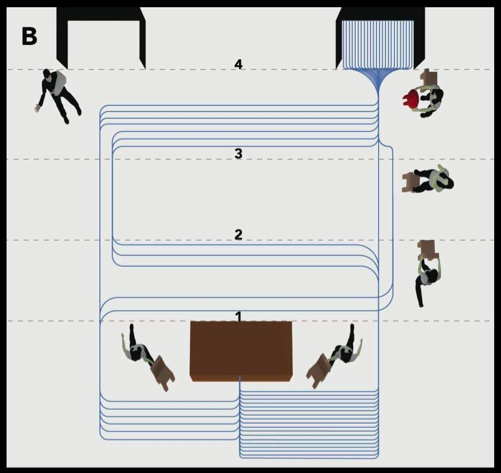Click here and press the right key for the next slide.
(This may not work on mobile or ipad. You can try using chrome or firefox, but even that may fail. Sorry.)
also ...
Press the left key to go backwards (or swipe right)
Press n to toggle whether notes are shown (or add '?notes' to the url before the #)
Press m or double tap to slide thumbnails (menu)
Press ? at any time to show the keyboard shortcuts
Automatic Mindreading in Adults

Automatic Mindreading in Adults
[email protected]
belief-tracking is sometimes but not always automatic

Kovacs et al, 2010

Kovacs et al, 2010

Kovacs et al, 2010

Kovacs et al, 2010

Kovacs et al, 2010

Kovacs et al, 2010

Kovacs et al, 2010

Kovacs et al, 2010

Kovacs et al, 2010

Kovacs et al, 2010

Kovacs et al, 2010 figure 1A
belief-tracking is sometimes but not always automatic

Schneider et al (2014, figure 1)

Schneider et al (2014, figure 3)

belief-tracking is sometimes but not always automatic





van der Wel et al (2014, figure 1)

van der Wel et al (2014, figure 2)

van der Wel et al (2014, figure 2)
belief-tracking is sometimes but not always automatic
aside: altercentric interference vs procative gaze vs movement trajectories

van der Wel et al (2014, figure 3)
‘they slowed down their responses when there was a belief conflict versus when there was not’
belief-tracking is sometimes but not always automatic

Back & Apperly (2010, fig 1, part)
belief-tracking is sometimes but not always automatic
-- can consume attention and working memory
-- can require inhibition
1. models [done]
2. processes
Q1
How do observations about tracking support conclusions about representing models?
Q2
Why are there dissociations in nonhuman apes’, human infants’ and human adults’ performance on belief-tracking tasks?
reidentifying systems:
same signature limit -> same process
signature limits generate predictions
Hypothesis:
Some automatic belief-tracking systems rely on minimal models of the mental.
Hypothesis:
Infants’ belief-tracking abilities rely on minimal models of the mental.
Prediction:
Automatic belief-tracking is subject to the signature limits of minimal models.
Prediction:
Infants’ belief-tracking is subject to the signature limits of minimal models.

Edwards and Low, 2019 figure 1

Edwards and Low, 2019 figure 4 (part)

Edwards and Low, 2019 figure 1

Edwards and Low, 2019 figure 4 (part)
signature limits generate predictions
Hypothesis:
Some automatic belief-tracking systems rely on minimal models of the mental.
Hypothesis:
Infants’ belief-tracking abilities rely on minimal models of the mental.
Prediction:
Automatic belief-tracking is subject to the signature limits of minimal models.
Prediction:
Infants’ belief-tracking is subject to the signature limits of minimal models.
reidentifying systems:
same signature limit -> same process
Q1
How do observations about tracking support conclusions about representing models?
Q2
Why are there dissociations in nonhuman apes’, human infants’ and human adults’ performance on belief-tracking tasks?

Edwards and Low, 2017 figure 7a

Edwards and Low, 2017 figure 7a

Edwards and Low, 2017 figure 7a

Maymon et al (pilot), figure 4B, used with permission
reidentifying systems:
same signature limit -> same process
An infant mindreading occurs as an automatic mindreading process in adults.
signature limits generate predictions
Hypothesis:
Some automatic belief-tracking systems rely on minimal models of the mental.
Hypothesis:
Infants’ belief-tracking abilities rely on minimal models of the mental.
Prediction:
Automatic belief-tracking is subject to the signature limits of minimal models.
Prediction:
Infants’ belief-tracking is subject to the signature limits of minimal models.
Q1
How do observations about tracking support conclusions about representing models?
Q2
Why are there dissociations in nonhuman apes’, human infants’ and human adults’ performance on belief-tracking tasks?